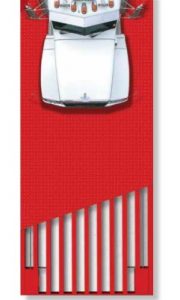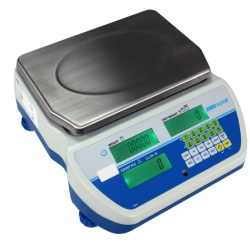Probably somewhere around 3/4 of our truck scale customers choose the steel deck truck scale, but in case you’re curious about purchasing a truck scale with a concrete deck, please keep reading to see which is better for your needs.
With a steel deck truck scale, once the foundation is in place, the installation process is quick and the customer is weighing usually within 1 day. However, you may prefer the durability and additional traction that a concrete deck truck scale provides.
So, what are the pluses and minuses of a steel deck truck scale versus a concrete deck truck scale? Read below to find out.

Steel Deck Truck Scale Overview
Our selection of steel deck truck scales from well respected scale manufacturers like Rice Lake, Avery Weigh-Tronix, and B-Tek are constructed of high quality structural steel and then painted with quality paint. Now each manufacturer builds their weighbridge slightly different but most include steel I beams running the length of each scale module. The number of beams and the space between each beam varies depending on the scale manufacturer.
The advantages of purchasing a steel deck truck scale are the fast installation and since a steel deck truck scale weighs less than a concrete deck version of the same scale, it makes it easier years later, to move or relocate if the need arises. The disadvantage of a steel deck is typically the platform can become more slippery than concrete.
Concrete Deck Truck Scale Overview
The concrete deck version of a truck scale is similar to a steel deck module, except there is no top treadplate of steel. There is an open top in each platform for the concrete to be poured in. In most cases, you will want to have the scale shipped to your location and fill the platforms with concrete once the scale is set in place. The normal cure time for the concrete is around 28 days.
The advantage of a concrete deck truck scale includes better traction in wet conditions such as rain and snow and better load distribution across the overall weighbridge. In some cases, concrete decks can provide a few extra years of service when compared to steel decks. The disadvantage of concrete deck scales is the extended wait time while the deck cures. Also, if you need to move the scale, it can be more difficult with the heavier platform.
We hope this article helps you to determine which truck scale top you prefer. They both have their +’s and -‘s. If you need some guidance and are looking for truck scale prices and buying information, please call us at (919) 776-7737 or complete our RFQ form.

